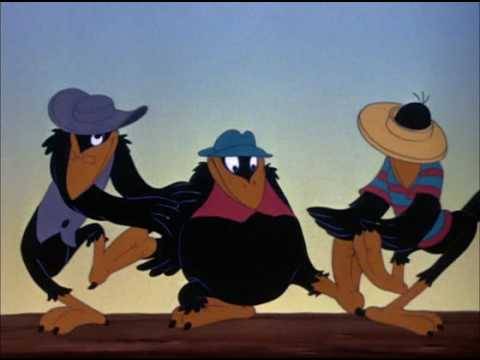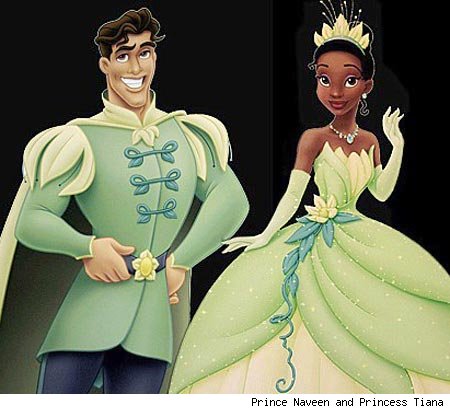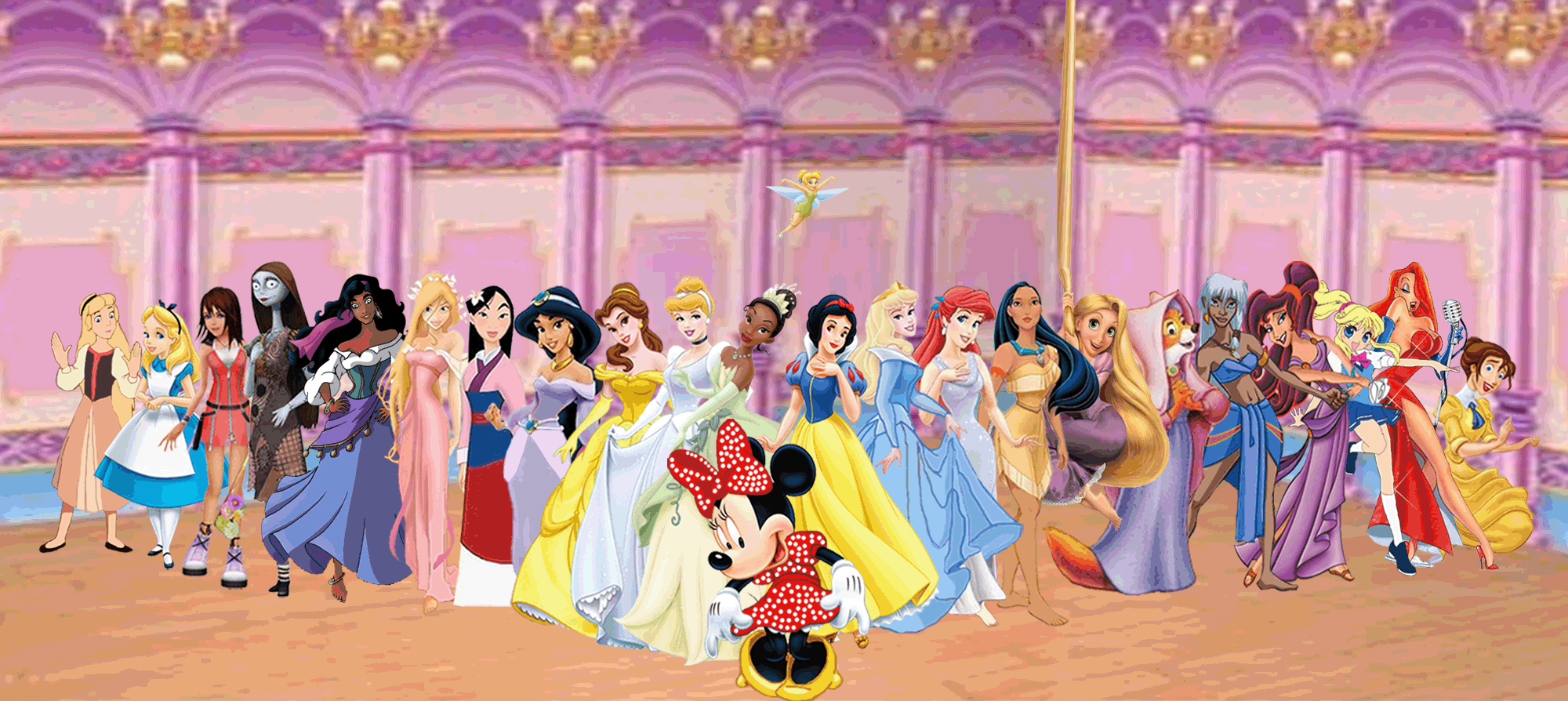The Promotion of Racism through Children’s Media
As Stephen Colbert stated, “I love the truth. It’s the facts that I’m afraid of.” People have a tendency to only acknowledge things in history that make them seem strong, but respectable and moral. When it comes to race most people will claim they are not racist at all. In a poll done by CNN, they asked 328 blacks and 703 whites if they knew someone who they consider to be racist; 43 percent of whites and 48 percent of blacks said yes. They then asked if they would consider themselves to be racist to which only 13 percent of whites and 12 percent of blacks said yes (CNN). Colbert says it best in his statement, “I don’t see color, but people tell me I’m white and I believe them because people call me ‘Sir.’” (Colbert). Racism is more than just the respect levels that different nationalities get over another; it is a mental block that people keep inheriting, which results in disarray and lack of unity as a country. It has been a serious problem in the United States going all the way back to the development of the country. After so many tries to end racism by Martin Luther King Jr., Rosa Parks, Malcolm X, and many others, the problem is still dominant in the American Society. Parents teach their children from an early age what to believe, and because of that the racism continues from generation to generation. The question that arises now is whether or not racism has the potential to disappear. With the efforts of children’s media groups such as Disney, Pixar, and DreamWorks, they are proving that racism is beginning to diminish with a new generation of children, beginning with their attempt to show all forms of culture and race in a positive light in their children’s movies, but it is going to take lots of work for it to completely disappear.
In Jane Elliott’s experiment, done in the 1960s, on how children react to racism, she proved that children are susceptible to outside forces, which can include programs in the media that children are exposed to. If children are told something once, they take it as fact and live by that. Jane Elliott proved this by making her 3rd grade students participate in an experiment on the harms of racism. After Martin Luther King Jr. was killed, Elliott became aware of how naïve her students were on the effects of racism considering they lived in a predominately Caucasian society. She came to class the next day and asked if they wanted to participate in an experiment. She told them that they were going to distinguish between each other by their eye color. Brown-eyed children were bad, mean, uneducated, and less important than blue-eyed children. She made the brown-eyed children move to the back of the classroom— they couldn’t participate at recess, they couldn’t get seconds at lunch, and they had to wear a scarf around their neck so people knew immediately they had brown eyes. The blue-eyed children got all the benefits and she praised them constantly. The children immediately conformed to their roles. The blue-eyed children were extremely cruel to their brown-eyed former friends, and the brown-eyed children became quiet and did poorly on their assignments. Both personas completely changed to match what they were told were the “correct” ways to behave (Elliott). This experiment was shocking to many Americans, and the news made a huge deal about how easy it is for children to believe what they are told, and the implication was that society as a whole needs to be more careful about the messages that we convey to children. After this experiment was done the media was chastised for different children’s programming and movies that were aired.
Disney was a receptor of a lot of criticism after the 1960s because of how they portray different cultures in their movies. Some of their movies that got the worst review included, The Jungle Book, Aladdin, The Lion King, Tarzan, Lady and the Tramp, and Peter Pan (Brunnette). As movie critics became more conscious of racial discrimination, they became more critical of how children’s movies portrayed ethnic backgrounds. Aladdin has features of a Caucasian man and has an American accent rather than a Persian accent from the culture he is supposed to be from. Also, the merchant in the opening song sings, “Where they cut off your ear if they don’t like your face.” (LaBreauxst). This makes Persians seem barbaric, which was very offensive to people of this origin because the practice of cutting of limbs as punishment was an ancient practice that only took place in certain regions of Persia. In The Lion King the hyenas have an inner African accent and are the bad guys, and in Tarzan which takes place in Africa, there are no black people (Brunette). This gives off the wrong persona of people in Africa and doesn’t teach children factual information. In The Lady and The Tramp, Asians are given a very negative persona through the Siamese cats. They have really heavy Asian accents and are sneaky and devilish (LaBreauxst). By having such distinct accents spoken by different characters, it leads children to associate the accent with the characteristics of that character. Then, in Peter Pan Indians are wrongfully portrayed as uncivil and savage-like (Brunette). All of these negative stereotypes gave children a false idea of how a culture is as a whole. Many people were offended by this discrimination and believed that misrepresentations of cultures in the media perpetuate stereotypes and therefore perpetuate racism. Though Disney did not mean to show these types of stereotypes as a way to egg on racism, they became, nonetheless, chastised for their work. Since then they have made many attempts to counter the stereotypes they created.
In recent years Disney has made a lot of progress in their endeavor to portray different cultures in a positive light for their children viewers. Beginning with Pocahontas which came out in 1994, 41 years after Peter Pan, Disney tried to give off a more positive persona of Native Americans (“Disney Movies Guide”). In the making of this film, Disney made a huge step in hiring a Native American actress to voice the character of Pocahontas (LaBreauxst). Before this, characters were primarily played by people with Anglicized accents that didn’t represent the culture and race they were playing, such as in Aladdin. This started a new trend in the children’s film industry. Other shows that followed suit were The Lion King, which hired 3 African American voice actors to play Sarabi, Nala, and Shinzi. Mulan came soon after, having their lead heroine voiced by an Asian actor (LaBreauxst). Although this was a big improvement for Disney, critics were still pestering them about their lack of African-Americans playing people in their cartoons. Up to this point, African-Americans had only voiced animals in Disney movies. Besides The Lion King, they had also been featured as the annoying singing crows in Dumbo, and the obnoxious apes in The Jungle Book (LaBreauxst) .It gave off the impression that, though African-Americans still have some value, they are not equal to everyone else. They were used more for the comic relief in movies. The hero or heroine had never been an African American and people found that to be troubling when it came to how children perceived the importance and value of different cultures while watching these so called family-friendly movies.
Disney isn’t the only company to be criticized for its portrayal of minorities in children’s films. In 2004, DreamWorks presented the film Shark Tales. This film at first seemed to be a very innocent film, but after further research, discrimination slowly began to present itself. The plot line follows Oscar, an underachieving worker at a Whalewash, who dreams of becoming rich and famous and who is played by the African-American Actor, Will Smith. Unfortunately, Oscar owes a debt to his boss and rather than paying it back he gambles it away, which causes him to be physically beaten by his boss’s Jamaican henchmen. Opportunity presents itself when a shark happens to die right next to him and everyone thinks he killed it. The whole film is then centered on his fame. He abuses his fortune and abandons his friends. Later, his lie is discovered and he is sent back to the Whalewash with nothing (Wikipedia). Many people criticized this was a negative stereotype of African Americans. Since Oscar was the only one played by a black actor, and the only one with a black accent, it gave a destructive take on African Americans being poor or residents of ghettos. It also made them seem irresponsible and uneducated. It was clear he was a “black” fish by his mannerisms and things he said. At one point in the film he said, “Don’t worry; most white fish can’t do it either.” This, by default defines him as a “black’ fish (Lugo-Lugo). The theme that is taken from this film is to just accept where you are, because that’s where you belong. The film gives off the impression that no matter what you do to fight the system, everyone belongs somewhere specific depending on their background. Oscar belonged in the ghetto because naturally he didn’t fit in since he was a “black” fish (Lugo-Lugo). This can be detrimental to a child’s yearn for something great, such as a better education or even how they view a race. The film gives the impression that you should just accept what you were given and not strive for more because you will fail if you try. Films like this, as well as those produced by Disney, have learned they have to be careful of what message they may be sending to children.
Pixar Film and Walt Disney Pictures joined together in 2009 to successfully change the image of African Americans and Disney Princesses by producing the film The Princess and the Frog, which portrayed the first African-American Disney Princess. Before Disney and Pixar officially came out with the movie they had people review the story line and critique it so that they could make sure that the movie was not crossing any lines. There was only a small amount of criticism compared to the other Disney films, about the portrayal of minorities. At first the princess was going to be named Maddie, but people complained that this was a slave’s name so they changed it to Tiana. Then there was complaint that the prince was white, to which many people countered by explaining the importance of combining cultures to show that everyone is equal (Reidemann). By having critiques review the story line before they began the making of the film, The Princess and the Frog was widely successful with all audiences. Disney was able to show such a happy time in history, the Jazz Age, and through the depiction of this age, Disney was able to positively teach children about black culture. Another new step Disney took through this movie was having the supporting role of the princess’s best friend played by a white character. They were able to show two different nationalities combine to become equal in each other’s eyes. The most important part of the story line is that it addresses the issue of rising above your situation, as opposed to Shark Tales, which reinforced socioeconomic boundaries. Tiana was able to fulfill her dream of owning a restaurant even though she was from African American decent. The movie proved to children that you can achieve your dreams no matter who you are (Reidemann). It was risky to make a change to the racist perception people subconsciously make, but through the visual changes in this racist perception, children can see that it doesn’t matter what your background is, we all have equal opportunity, and no race is inferior to another.
During the court case of Brown vs. Board of Education in 1954, Kenneth B. Clark conducted the first “doll test” to see how African-American children perceived themselves. His results were than compared to those of the same study done in 2009 by ABC News to see if children are being discriminated against in the same degree. At the beginning of the first study Clark said, “The specific problem of this study is an analysis of the genesis and development of racial identification as a function of ego development and self-awareness in Negro children.” In his test he got two identical dolls except for the fact that one of them was black and the other was white. He brought together 253 African American children, 134 were from segregated schools and 119 were tested from mixed schools. He picked kids that were from the ages between 3 and 7. He brought them individually into a secluded room and had them sit at a table with the dolls in front of them. He then asked them:
1. Give rne the doll that you like to play with.
2. Give me the doll that is a nice doll.
3. Give me the doll that looks bad.
4. Give me the doll that is a nice color.
5. Give me the doll that looks like a white child.
6. Give rne the doll that looks like a colored child.
7. Give me the doll that looks like a Negro child.
8. Give me the doll that looks like you.
The results were stunning. He designed the test so that the first set of questions displayed the child’s preference, questions 4 through 7 indicated the child’s knowledge on racial differences, and the last revealed the child’s self-identification. The children responded very positively to the white doll. It was the good doll, the nice doll, and the pretty doll. The children were more attracted to the white doll in every way. When it came to the last question, many people were appalled with the outcomes. One little girl sat there for a moment and cried when asked who she looked like and then slowly reached over to the black doll and slowly lifted it up as she kept her head low. These shocking events are what helped influenced the Brown vs Board of Education to abolish segregation (Clark).
In 2009, ABC News wanted to see if African-American children were still feeling the same degree of discrimination that the children in Clarks study felt back in 1954. They gathered up African-American children and asked them the same questions to see what their answers would be today. The answers have definitely changed from all those years ago, but not as drastically as hoped. It was discovered that young girls still view the white doll as slightly better than the black doll. One girl said the white doll was prettier because it had “creamish skin.” Although the numbers have changed, 88 percent of the children identified themselves with the black doll. A new question arose in this experiment that wasn’t presented in the previous study: is this day in age obsessed with appearance? Surprisingly, every single boy that was asked what doll was prettier said that they both were equally pretty. Unfortunately, when the girls were asked this question, 47 percent of the girls said that the white doll was prettier. The boys were more confident with themselves, where the girls still wary about who they were ("Revisiting an Experiment on Race"). This case brought up many new questions regarding how the perception of race is changing. Diane Sawyer, an anchor for ABC News, questioned whether or not the perception is different for little boys and girls because African-American men are presented in the media much more than that of women. The way racism is presented in society is changing. What use to be more verbal and physical forms of prejudice are becoming more of a subconscious bias towards different groups of people. That bias in turn is affecting how children, specifically girls, perceive themselves compared to others.
Racism in children’s media has affected the view children have on different nationalities. Kenneth B. Clarks “doll test” proves that it has gotten better over the years, but there is still a lot of progress and changes that need to be made. Disney’s effort in improving their interpretation of different cultures has drastically improved the way that ethnic groups are being acknowledged. Children believe what they see and hear, as proven by Jane Elliott’s experiment on race. It is easy to quickly change a child’s opinion and so it is vitally important to teach them that everyone is equal no matter what nationality you are from. The media has a huge part in children’s lives. It is going to be one of the main influences that teach children ways of life. Racism will never be able to disappear if drastic changes are not made to acknowledge that we are all human beings and race does not define who we are as people. Children’s media is making those drastic changes, and eventually, if those changes keep happening, the new generation of children will be able to accept everyone as person, not a race.






